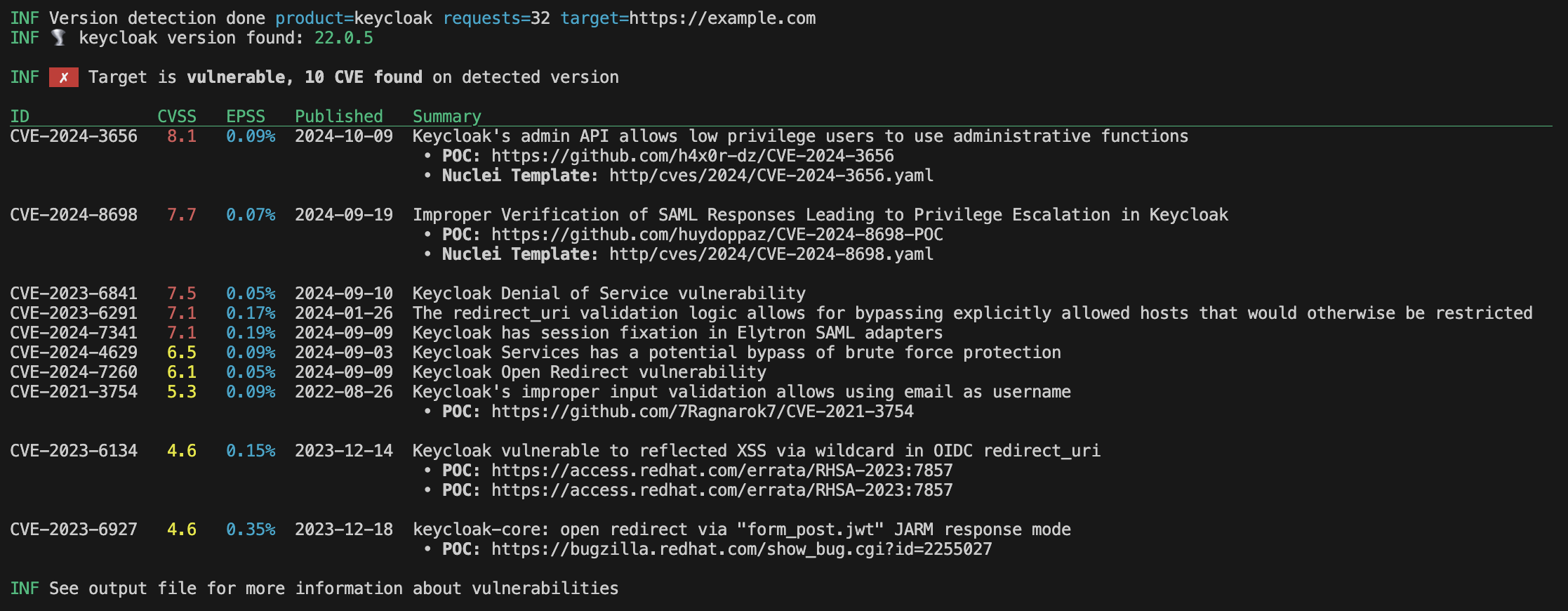We are aware of the difficulty of obtaining a precise list of vulnerabilities actually applicable to a specific version.
The main objective behind Verdex is to quickly identify the vulnerabilities associated with the detected version.
The list of vulnerabilities is automatically displayed at the end of a successful scan, as well as in the output files.
To provide accurate vulnerabilities, Verdex relies on search-vulns.com CVE data and first.org EPSS data.
Available CVE data
Here are CVE data available in Verdex output files:
- CVE ID (
CVE-YYYY-XXXX)
- Description
- CVSS score preferably v3.1 if available
- EPSS score from first.org API
- Vulnerable versions
- Is it a Known Exploited Vulnerability (KEV)
- Publication date
Here is data example for CVE-2022-4361 on Keycloak:
{
"id": "CVE-2022-4361",
"description": "Keycloak, an open-source identity and access management solution, has a cross-site scripting (XSS) vulnerability in the SAML or OIDC providers. The vulnerability can allow an attacker to execute malicious scripts by setting the AssertionConsumerServiceURL value or the redirect_uri.",
"cvss_score": 10,
"epss_score": 0.00311,
"is_kev": false,
"vulnerable_versions": [
"21.0.2"
],
"published_at": "2023-07-07"
},

